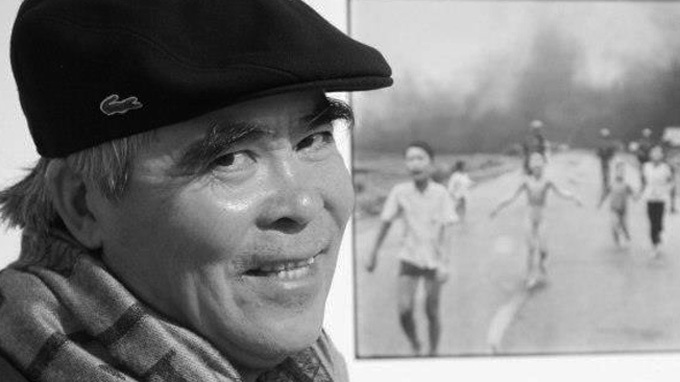Pulitzer-winning photo journalist Nick Ut praised his colleagues - war reporters- for their braveness, decisiveness and willingness to risk their own lives for authentic, truth-revealing historic photos and footage of the world’s wars, their participants, and innocent victims.
Ut, whose most famous photo captured Phan Thi Kim Phuc as a naked, severely burned 9-year-old girl running toward the camera to flee a napalm raid in southern Tay Ninh province during the Vietnam War in 1972 won the Pulitzer award that year, recalled that not a single field reporter at the AP, where he worked as a photo journalist back then, went uninjured.
He was injured three times and narrowly cheated death when a tank he was riding in ran over landmines. Huynh Van My, Ut’s elder brother, also an AP war reporter who taught him professional photography, perished on a mission when he was only 27 years old.
“I think that as the current battlefields like Afghanistan, Iraq, and Syria are even more ferocious and perilous than those in the Vietnam War and others several decades ago, today’s generations of war reporters have employed different techniques from their predecessors, though sadly many more of them continue to get kidnapped and killed on mission,” Ut noted.
Like his colleagues, the seasoned photo reporter said that he finds his job worthwhile, as the photos and coverage which they risk their lives for depict and condemn the atrocities of war, especially the huge losses and sufferings inflicted on innocent civilians, and can thus make a difference.
When coming across injured victims, war reporters are usually tormented over whether they should continue to take photos and tape people who are writhing in agony or clinging onto their lives to capture the historic moments, or whether they should comply with ethics by stopping their work and helping to rescue them instead.
Regarding this, Ut said he would have to fulfill a reporter’s role by capturing the precious moments and then, if possible, help with a rescue.
In 1994, South-African field reporter Kevin Carter, who took a photo capturing a vulture standing behind a child who was dying from starvation in Sudan won a Pulitzer prize, suffered from harsh criticism from many people. He committed suicide at 33.
“In fact, after taking the photo, Carter did drive the bird away and the child was saved. If Carter hadn’t taken that photo, the world wouldn’t now have such a valuable photo which draws everyone’s attention to the famines in Africa,” Ut said.
“It takes courage, composure and decisiveness to be war reporters. They are supposed to grasp the geographical and cultural features and know the people everywhere they work well. A bit of good luck is also needed,” said Nguyen Van Vinh, a former video journalist at Reuters, who worked in Afghanistan.
|
Born in 1951, Nick Ut, whose real name is Huynh Cong Ut, was a Vietnamese American photographer for the Associated Press (AP). His Pulitzer Prize-winning photo of naked, nine-year-old Kim Phuc running away from a napalm attack with serious burns on her back was ranked 41st among the 20th century’s 100 most influential photos by the University of Columbia. In 2012, to mark the 40th anniversary of his Pulitzer Prize-winning photo, Ut was inducted into the Leica Hall of Fame as the third recipient of the prestigious award. |


















































